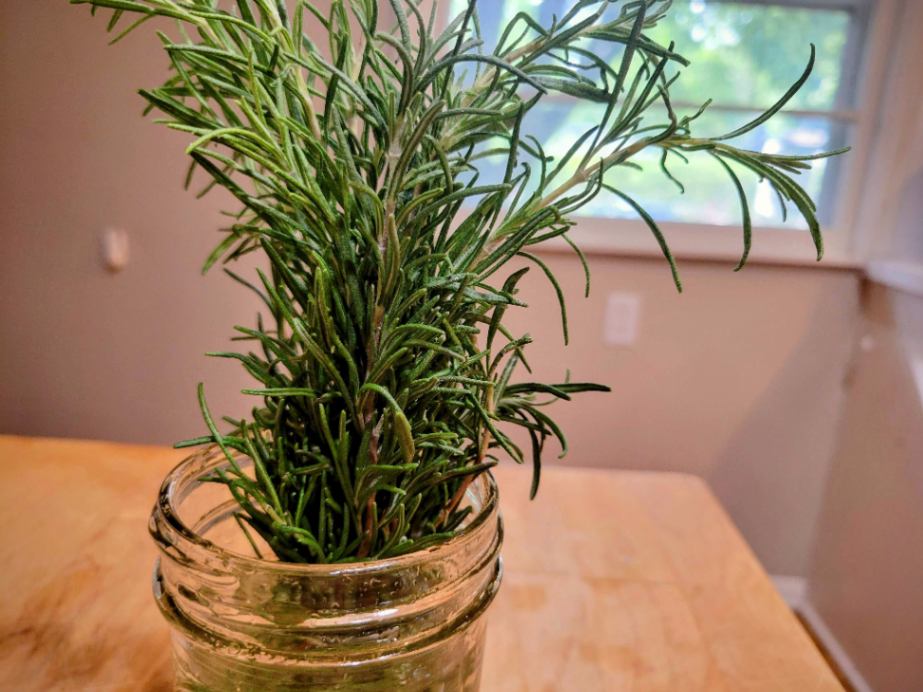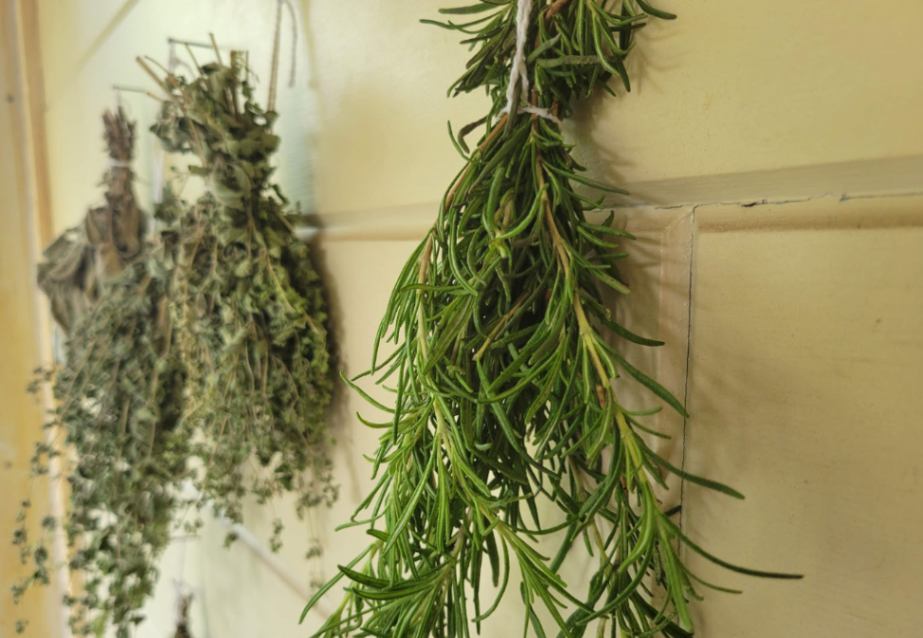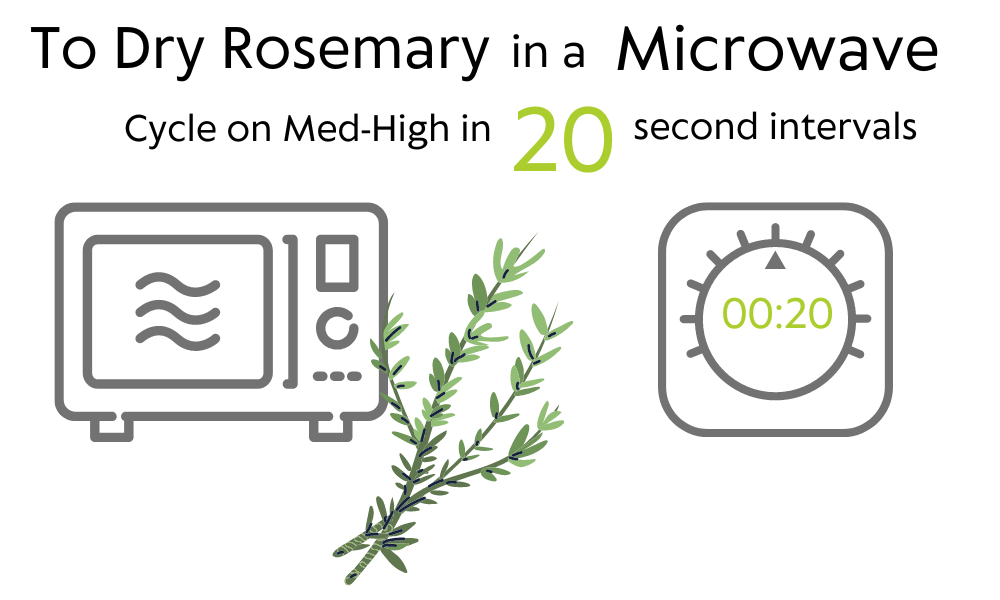This post may contain affiliate links which means I may receive a commission for purchases made through links. I only recommend products that I have personally used. As an Amazon Associate I earn from qualifying purchases. Learn more on my Private Policy page.

Knowing the best harvesting methods can play a significant role in maintaining the health of your rosemary plants while maximizing the flavor and fragrance of this versatile herb.
To harvest rosemary, use sharp, sanitized pruning shears for clean cuts. Avoid over-harvesting by limiting to one-third of the plant at a time. Choose soft, pliable stems, at least 6-8 inches long, higher up on the plant. Don’t harvest from the woody base or new growth to maintain plant health.
Understanding the optimal harvesting period and the correct methods can ensure a bountiful harvest without compromising the well-being of your rosemary plants. Keep reading to learn the ideal time and techniques for harvesting rosemary and the best ways to preserve it.
Table of Contents
For an in-depth exploration of rosemary, see my Complete Guide to Rosemary.
When to Harvest Rosemary
To ensure you get the best results from your rosemary harvest, it’s important to time your harvest just right.
Late spring to early summer is the ideal time for harvesting rosemary, as extreme temperatures can affect the quality of your harvest. Aim to harvest rosemary in the morning when its essential oils are at their peak, maximizing both flavor and fragrance.
Proper hydration is crucial before harvesting rosemary. Water your plants the day before to ensure they’re adequately hydrated for harvest. By following these simple tips, you’ll be able to enjoy fresh rosemary straight from your herb garden.
How to Harvest Rosemary Without Killing the Plant
It’s important to approach this process of harvesting rosemary with care to ensure the plant remains healthy and continues to thrive. By following a few simple guidelines, you can harvest rosemary without harming the plant.
Use Sharp, Sanitized Pruning Shears
When harvesting rosemary, use sharp pruning shears to make clean cuts that keep the plant healthy. Keeping your shears clean is also incredibly important when it comes to protecting your rosemary plants from diseases. Disease can be transferred between plants if care it not taken to properly sanitize your shears.
Never Harvest More Than One-Third of Rosemary Plant
Moderation is key when harvesting rosemary. To prevent excessive stress on the plant, it’s crucial to avoid over-harvesting. As a general rule, limit yourself to harvesting no more than one-third of your rosemary plant at a time. This ensures that enough leaves remain for photosynthesis and sustains the overall health of the plant.

Harvest Soft But Established Rosemary Stems
When selecting stems for harvest, opt for those that are soft and pliable rather than woody or rigid. Soft stems indicate younger growth that will yield better flavor when cooking. Ensure that each stem you choose measures at least 6 to 8 inches in length—this provides ample material for use while leaving enough foliage behind for ongoing photosynthesis.
Avoid harvesting from the woody base of rosemary plants as this can hinder new growth and weaken the overall structure of the plant. Instead, focus on the soft and flexible stems located higher up on the plant.
While it may be tempting to harvest new growth, it’s best to resist this urge. Allowing new shoots to mature ensures continuous growth and a healthy rosemary plant in the long run.
Prune Rosemary Evenly for Continuous Balanced Growth
Pruning plays a vital role in maintaining the health of your rosemary plant. By regularly trimming back your rosemary, you encourage continuous growth and promote a bushier, more robust appearance. To prune your rosemary effectively, follow these steps:
- Use clean pruning shears or scissors.
- Identify areas that require attention, such as leggy or overgrown branches.
- Cut just above a leaf node or joint when cutting these sections
- Remove any dead or damaged branches entirely.
- Aim for an even distribution of cuts throughout the entire plant.

Regular pruning not only keeps your rosemary looking neat but also stimulates fresh growth from lower down on the stems, resulting in a healthier and more vibrant plant overall.
Preserving Fresh Rosemary
To ensure you have fresh rosemary on hand whenever you need it, it’s essential to know how to preserve it properly. Here are some effective methods for storing and freezing fresh rosemary for long-term use.
Storing Fresh Rosemary in the Fridge
One simple way to keep your fresh rosemary vibrant and usable for up to two weeks is by storing it in the refrigerator. Start by trimming the bottom of the stems and removing any damaged leaves. Next place the rosemary sprigs in a glass jar filled with water, just like you would arrange a bouquet of flowers. This method helps maintain freshness by providing hydration to the herb.

Freezing Whole Rosemary Stems
If you want to store fresh rosemary for an extended period, freezing is an excellent option. One way to freeze rosemary is by preserving whole stems. This method allows you to retain the herb’s natural form while maintaining its taste and aroma. To freeze whole rosemary stems:
- Rinse and pat dry the stems thoroughly.
- Place them in an airtight container or vacuum-sealed bag.
- Label and date the container or bag for future reference.
- Store it in the freezer until needed.
Freezing whole rosemary stems ensures that they remain intact until ready for use, making them ideal for garnishing dishes or infusing flavors into stews or roasts.
Freezing Rosemary Leaves in Ice Cubes
Another popular method for freezing fresh rosemary is by preserving the leaves in ice cubes. To freeze rosemary leaves in ice cubes:
- Remove the leaves from the stems and chop them finely if desired.
- Place chopped rosemary leaves into each cube compartment.
- Fill ice cube tray with water or olive oil.
- Freeze until solid, then transfer the rosemary-infused ice cubes into a labeled plastic bag for storage.
These frozen rosemary cubes can be easily added to soups, sauces, or marinades, providing a burst of fresh flavor even during the off-season.
How to Dry and Store Rosemary
Drying rosemary is a simple process that allows you to preserve its flavor and aroma for future use.

Hanging Method: Bundle and Air Dry
The most common method for drying rosemary is by hanging it upside down in a well-ventilated area. To do so, simply gather several rosemary sprigs together and tie them into a bundle using kitchen twine or string. Hang the bundle upside down in a cool, dry place with good air circulation.
Allowing rosemary to air dry slowly helps retain its essential oils, resulting in a more potent flavor. It typically takes about two weeks for the rosemary to fully dry using this technique.
Storing Dried Rosemary
Once the rosemary has fully dried, remove the leaves from the stems by holding the thicker end of the bundle and running your fingers along the stem in the opposite direction. Discard any tough stems or debris.
To keep dried rosemary fresh, store it in an airtight container away from sunlight. Mason jars or sealed bags work well to this end. When properly stored, dried rosemary can stay good for up to one year, but for best flavor, it should be used within 6 months.

Alternative Drying Methods
If you prefer quicker results, there are alternative methods for drying rosemary:
- Dehydrator: Using a food dehydrator provides faster drying times compared to air drying. Simply spread out your rosemary sprigs on dehydrator trays and follow the manufacturer’s instructions.
- Oven Drying: Preheat your oven to its lowest setting (typically around 170°F or 76°C). Place the rosemary sprigs on a baking sheet lined with parchment paper, ensuring they’re in a single layer. Leave the oven door slightly ajar to allow moisture to escape. Check the rosemary regularly and remove it once it becomes dry and crumbly.
- Microwave: The microwave drying method is ideal for small quantities of rosemary. Lay a few sprigs on a microwave-safe plate lined with paper towels. Microwave on medium-high in 20-second intervals until the leaves are dry. This could take 1 to 2 minutes total.

While methods like oven drying and using a microwave can speed up the process of drying rosemary, they can also result in a significant loss of quality compared to low-heat methods. Check out my article about how to dry woody herbs like oregano, thyme, sage, and rosemary, and why low-heat drying methods are preferred for these types of herbs.
Storage Tips
To maintain optimal flavor, keep these storage tips in mind:
- Store dried rosemary away from heat sources, such as stovetops or ovens.
- To keep out moisture and prevent oxidation, it is important to store dried herbs in containers that are airtight. Vacuum bags are a great choice because they eliminate any air.
- Crush the dried leaves just before using them to release their full flavor.
Remember that while dried rosemary can be stored for up to one year, its flavor is best within the first six months. After that point, it may start losing some of its potency.
Conclusion: The Art of Harvesting Rosemary
In conclusion, mastering the art of harvesting rosemary involves a combination of timing, technique, and preservation. By adhering to the guidelines outlined here, you can confidently gather fresh rosemary from your garden and enjoy its aromatic and flavorful essence for your culinary adventures. Whether you’re snipping stems for immediate use or preparing for the long-term by freezing or drying, the key lies in careful selection, proper tools, and a mindful approach. By preserving the integrity of your rosemary plants through considered harvesting and storage practices, you can savor its distinctive taste and aroma while ensuring its continued vitality for seasons to come.
Frequently Asked Questions (FAQs)
Can I harvest rosemary throughout the year?
Rosemary is a hardy herb that can be harvested year-round, but it’s best to avoid excessive pruning during temperature extremes. The ideal time to harvest rosemary is from late spring to early summer. It’s also best to harvest rosemary in the morning before the temperature gets too hot.
How often should I harvest my rosemary plant?
Optimal rosemary harvesting time is late spring to early summer. Morning harvesting is best, as essential oil levels peak, enhancing flavor and fragrance. Hydrate rosemary plants the day prior to harvesting, and don’t harvest more than one-third of the foliage.
Can I use freshly harvested rosemary right away?
Freshly harvested rosemary can be used immediately in a variety of dishes like roasted meats, soups, stews, and roasted vegetables. Roasting potatoes and onions with olive oil and rosemary is a particularly wonderful use of this flavorful herb.
What is the best type of rosemary to grow for cooking?
Ideal rosemary varieties to grow for culinary uses are Common, Tuscan Blue, and Barbecue rosemary. Some cold-resistant options are Hill Hardy and Arp. For compact growth, explore Huntington Carpet and Prostrate.
Is it possible to freeze fresh rosemary?
Freezing is an excellent method for preserving fresh rosemary. Simply chop it finely or leave sprigs intact before placing them in an airtight container or freezer bag. Freezing rosemary in ice cube trays with water or olive oil is another great freezer preservation method.
How long does dried rosemary last?
When stored properly in an airtight container away from heat and light, dried rosemary can maintain its flavor for up to one year. For the best flavor, however, it’s best to use dried rosemary within the first 6 months after storing it.
What grows well next to rosemary?
Rosemary grows well with beans, carrots, brassicas like cabbage, broccoli, and kale. Rosemary also thrives among drought-tolerant herbs such as thyme, oregano, sage, lavender, all of which make excellent rosemary companions.
Last Updated on 25 October 2023 by Bob Lee

